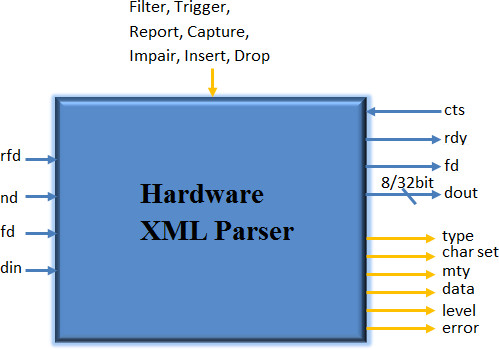
Advanced Java XML Manipulation Methods
Explore sophisticated techniques for efficient XML processing in Java

Key Highlights
- Versatile Parsing Techniques: Utilize DOM, SAX, and StAX parsers tailored to your document size and performance needs.
- Binding and Transformation: Leverage JAXB for object-to-XML binding and XSLT for transforming XML into various formats.
- Efficient Querying: Harness XPath for precise data extraction and manipulation within XML structures.
Overview of XML Manipulation Techniques
Parsing Approaches
Java offers several parsing methodologies, each suited to different scenarios based on XML file size, memory constraints, and complexity of operations:
DOM (Document Object Model) Parser
The DOM parser reads the entire XML document into memory and represents it as a tree structure. This method is excellent for applications that require significant data manipulation, easy navigation, and frequent updates. However, it may consume excessive memory for large files.
SAX (Simple API for XML) Parser
SAX is an event-driven parser that reads XML documents sequentially. It triggers events such as "start element" and "end element," allowing you to process data on the fly. SAX is an ideal choice for handling large XML documents due to its low memory footprint.
StAX (Streaming API for XML) Parser
StAX provides a cursor-based mechanism, blending the benefits of both SAX and DOM. It allows developers to pull parsing events at their own pace, which provides enhanced control and improved efficiency in memory management compared to DOM.
Advanced Libraries and Techniques
Java API for XML Binding (JAXB)
JAXB simplifies the conversion between XML data and Java objects. By automatically mapping XML elements to Java classes, JAXB alleviates the need for manual parsing and reduces the risk of errors. Through the processes of marshalling and unmarshalling, you can easily read and write structured XML data according to a defined schema.
XPath for XML Querying
XPath is a query language designed specifically for selecting nodes within an XML document. With XPath, you can perform intricate queries to extract or modify specific XML elements and attributes. This method proves extremely useful when working with complex and deeply nested XML data structures.
XSLT Transformations
XSLT is used to transform XML documents into different formats, such as HTML, plain text, or another XML structure. This transformation process not only changes the format but also allows for data restructuring, making it ideal for presenting data in a more user-friendly manner. The integration with Java is typically handled through the Transformer API.
Additional Libraries: JDOM and DOM4J
Alongside the built-in APIs, Java also features third-party libraries like JDOM and DOM4J, which provide more Java-friendly and flexible interfaces for XML manipulation. These libraries simplify tasks typically cumbersome with standard APIs, offering an object-oriented approach to interact with XML data.
Best Practices for Efficient XML Handling
Optimizing Performance and Memory Usage
Choosing the right XML parser based on your document's size and complexity is crucial for performance optimization. For instance, leverage SAX or StAX for large XML files to avoid memory overload and opt for DOM when extensive manipulation of smaller XML files is required.
Validation Techniques
Prior to processing, validating XML documents ensures they conform to expected structures. Utilize DTDs or XML Schemas to detect errors early and maintain data consistency. This practice is particularly important when the structure of incoming XML data has direct implications on application behavior.
Namespace Management
Working with XML documents that use multiple namespaces necessitates careful management to prevent naming conflicts. Use namespace prefixes dynamically, through the available APIs, to ensure your application interprets elements and attributes correctly.
Transformation and Data Binding
When you need to present XML data in different formats, use XSLT to transform XML documents elegantly. Additionally, leveraging data binding frameworks like JAXB eases the conversion between Java objects and XML data, significantly reducing the development overhead and potential for errors.
Comparative Overview of XML Parsing Technologies
The table below provides a comparative overview of the most common XML parsing approaches available in Java, highlighting their strengths and typical usage scenarios:
| Technique | Approach | Advantages | Limitations |
|---|---|---|---|
| DOM Parser | Tree-based, in-memory |
|
|
| SAX Parser | Event-driven |
|
|
| StAX Parser | Streaming, cursor-based |
|
|
Practical Example Using JAXP
Code Sample: XML Parsing and Modification
The following code example demonstrates how to parse an XML document, modify its contents, and output the result to a new file using the JAXP library. This showcases the process of reading an XML file, finding an element by its tag name, and updating its text content:
// Import necessary libraries
import javax.xml.parsers.DocumentBuilderFactory;
import javax.xml.parsers.DocumentBuilder;
import javax.xml.transform.Transformer;
import javax.xml.transform.TransformerFactory;
import javax.xml.transform.dom.DOMSource;
import javax.xml.transform.stream.StreamResult;
import org.w3c.dom.Document;
import org.w3c.dom.Element;
import org.w3c.dom.NodeList;
import java.io.File;
public class XMLManipulationExample {
public static void main(String[] args) throws Exception {
// Parse the XML file to create a Document instance
DocumentBuilderFactory factory = DocumentBuilderFactory.newInstance();
DocumentBuilder builder = factory.newDocumentBuilder();
Document document = builder.parse(new File("example.xml"));
// Locate the first <title> element and update its text content
NodeList nodeList = document.getElementsByTagName("title");
if (nodeList.getLength() > 0) {
Element titleElement = (Element) nodeList.item(0);
titleElement.setTextContent("New Title");
}
// Write the updated Document to a new file using Transformer
Transformer transformer = TransformerFactory.newInstance().newTransformer();
DOMSource source = new DOMSource(document);
StreamResult result = new StreamResult(new File("modified_example.xml"));
transformer.transform(source, result);
}
}
References
- Comprehensive Guide on XML File Handling Using JAVA - Medium
- A Guide to XML in Java - Baeldung
- Java XML Parsers - GeeksforGeeks
- Java XML Processing - CloudDevs
- Comprehensive Guide to Java XML Libraries - CodingTechRoom
- Efficient and Effective XML Processing in Java - Medium
- Java XML Manipulation Techniques - Oracle
- XML Processing in Java - CloudDevs
- Introduction to XML Processing in Java - Baeldung
- Medium - Java XML Manipulation Articles
Recommended Related Queries
Last updated March 2, 2025